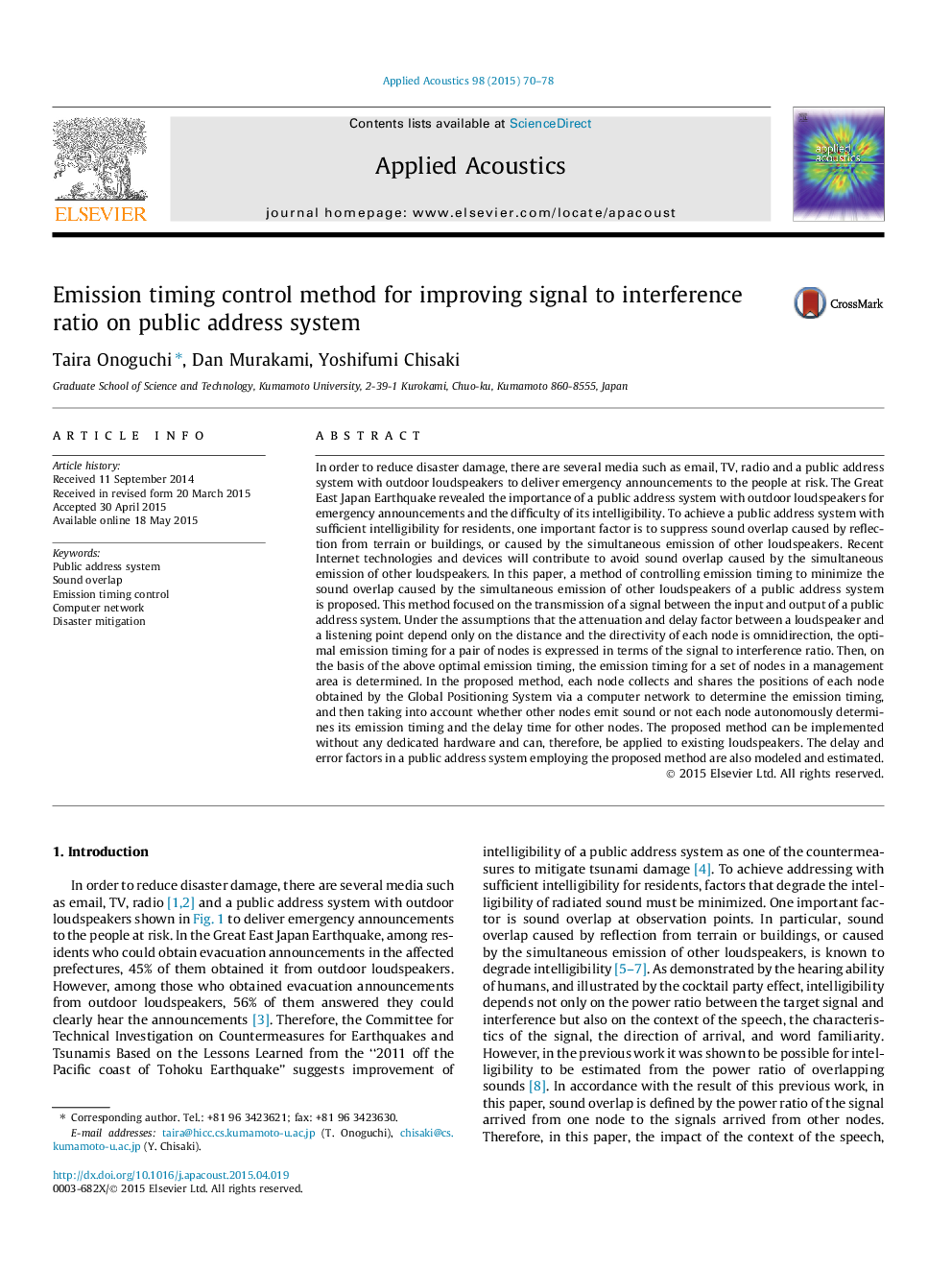| Article ID | Journal | Published Year | Pages | File Type |
|---|---|---|---|---|
| 754285 | Applied Acoustics | 2015 | 9 Pages |
•Public address systems for emergency use cause sound overlap between adjacent nodes.•A method of controlling emission timing of a public address system is proposed.•Each node collects and shares the information required for control over network.•Each node determines its emission timing and the waiting time for other nodes.•The error and delay factors in the proposed method are modeled and estimated.
In order to reduce disaster damage, there are several media such as email, TV, radio and a public address system with outdoor loudspeakers to deliver emergency announcements to the people at risk. The Great East Japan Earthquake revealed the importance of a public address system with outdoor loudspeakers for emergency announcements and the difficulty of its intelligibility. To achieve a public address system with sufficient intelligibility for residents, one important factor is to suppress sound overlap caused by reflection from terrain or buildings, or caused by the simultaneous emission of other loudspeakers. Recent Internet technologies and devices will contribute to avoid sound overlap caused by the simultaneous emission of other loudspeakers. In this paper, a method of controlling emission timing to minimize the sound overlap caused by the simultaneous emission of other loudspeakers of a public address system is proposed. This method focused on the transmission of a signal between the input and output of a public address system. Under the assumptions that the attenuation and delay factor between a loudspeaker and a listening point depend only on the distance and the directivity of each node is omnidirection, the optimal emission timing for a pair of nodes is expressed in terms of the signal to interference ratio. Then, on the basis of the above optimal emission timing, the emission timing for a set of nodes in a management area is determined. In the proposed method, each node collects and shares the positions of each node obtained by the Global Positioning System via a computer network to determine the emission timing, and then taking into account whether other nodes emit sound or not each node autonomously determines its emission timing and the delay time for other nodes. The proposed method can be implemented without any dedicated hardware and can, therefore, be applied to existing loudspeakers. The delay and error factors in a public address system employing the proposed method are also modeled and estimated.
